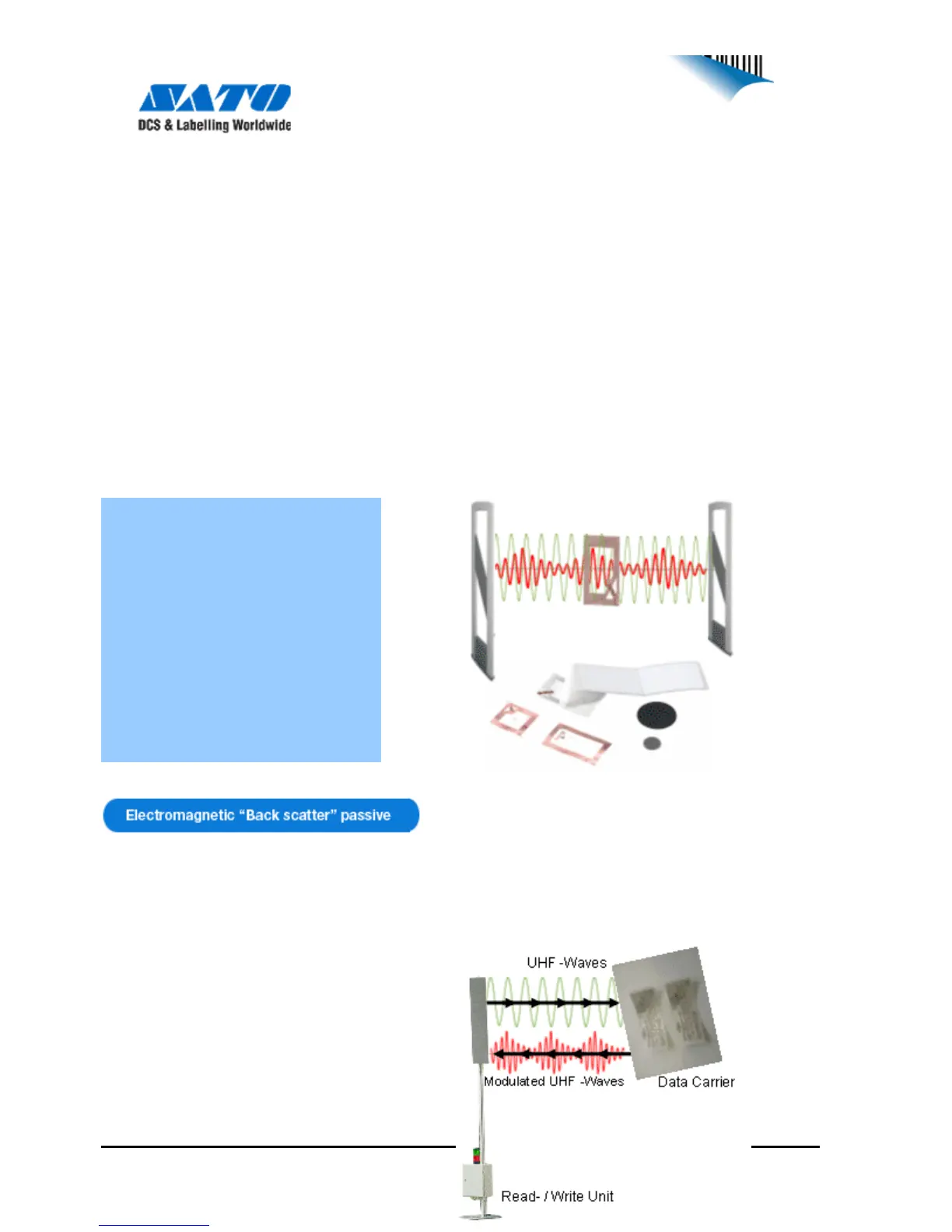Version 0.8 21/10/2004
A very common type of RFID implementation is the inductive coupling system. This
works in the HF (high-frequency) range at close distances.
The system consists of a powered reader and a passive tag. The passive tag receives
power from the reader by means of a scientific principle called inductive coupling. Basically,
the principle states that power can be transmitted from one inductive circuit (the reader)
to another inductive circuit (the unpowered tag) if there is a shared magnetic field
(coupling) between them. Once power is fed to the tag through this coupling, the
integrated circuit in the tag can then send data to the reader using the same waves of
electromagnetic energy sent by the reader.
Q: What are some of the typical applications for inductive coupling tags?
Typical applications for inductive coupling RFID tags include: RF EAS (electronic article
surveillance), smart cards, access control, apparel, baggage control, biometrics, item level
tagging, libraries, and transport.
Frequency area:
HF 13.56 MHz
Distance:
Within 120 cm vicinity
Data Carrier:
Communication passive
Energy supply passive
Serial Number:
64 Bit
Data Capacity:
< 1kbit EEPROM
Page 12 of 44
RFID tags that use back scatter technology reflect back to the reader a portion of the radio
waves that reach them. Data can ride along the reflected signal through a process called
modulation. Compared to the HF that is present in inductive coupling systems, the UHF
(Ultra-High frequency) frequencies used here are capable of operating at a greater range.
Both the communication and energy supply
data carriers are passive and work similarly
to two-way remote control units. The RF reader-
writer is transmitting the signal in which the
transponder generates the necessary energy to
bounce back a mirror signal which is
modulated back to the RF reader-writer. Typical
applications include: baggage handling, and
supply chain pallet and case tagging.

